How to Buy Emotionally Intelligent Art: A Luxury Collector’s Checklist
Art collecting has always had a split personality. On one side, you have the spectacle, auction houses with phone banks of bidders, galleries rehearsing their scripts, collectors competing for headlines. On the other hand, you have something quieter: people who collect not for visibility, but for resonance. This is the space of emotionally intelligent collecting.
Emotionally intelligent art isn’t decoration. It isn’t a quick fix for a blank wall or a design accessory to match the sofa. It’s about presence. Collectors who buy this way are creating spaces that hold them, allowing for stillness, reflection, and a kind of unspoken dialogue between the work and the room.
That’s why a checklist matters. Not because you need rules to follow, but because the art world thrives on noise. Galleries push you to buy fast. Trends tell you what’s hot. Interior magazines throw buzzwords like “statement piece” or “investment grade” until your head spins. A checklist brings you back to what’s actually important: how to buy art that feels intelligent, grounded, and personal.
This guide is written for the collector who values depth over hype. If you want presence rather than performance, this is your checklist.
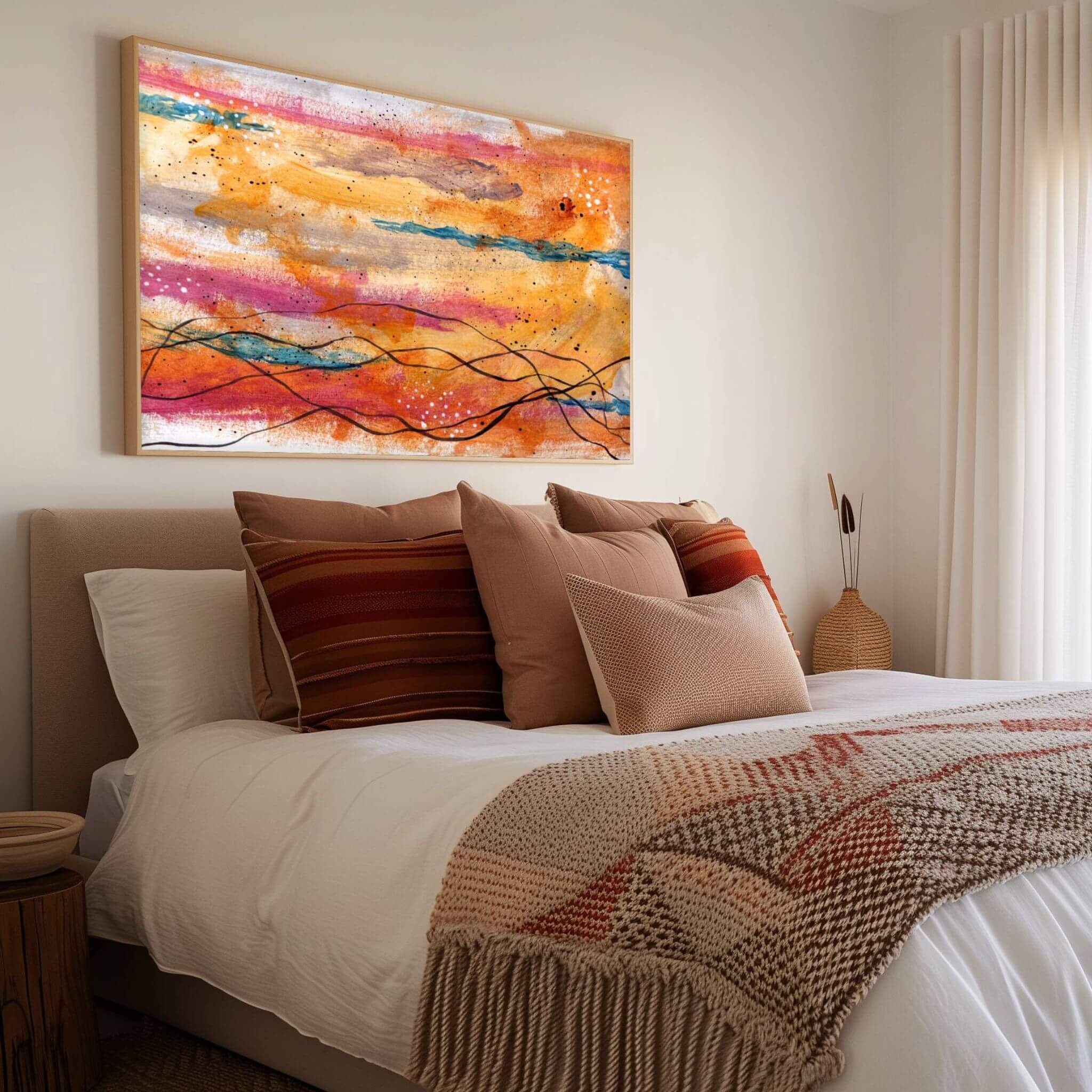
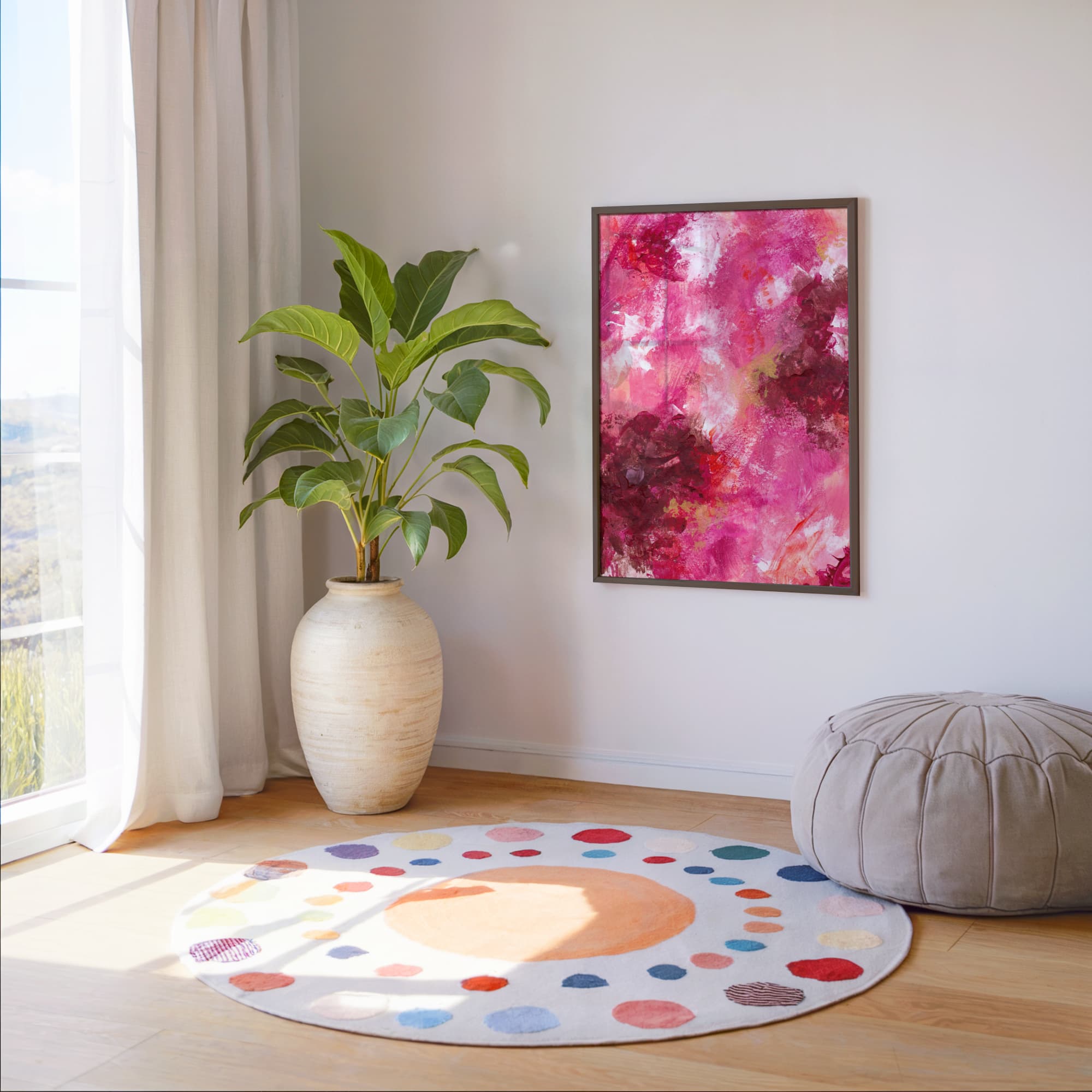
1. Start With Stillness, Not Status
Emotionally intelligent collecting begins in silence. Status asks, “Who will see it?” Stillness asks, “How will I live with it?”
The Trap of Status Buying
Collectors who buy for recognition often end up with works that look good in a press release but feel hollow in the home. A flashy signature or a loud colour scheme can impress guests at a party, but won’t necessarily settle you when you walk through the door at midnight after a heavy day. Status fades when no one’s watching.
Stillness as a Measure
The most discerning buyers I’ve worked with start from an entirely different place. They ask, “Does this piece help me breathe?” That might sound intangible, but it’s as practical as it gets. If a piece makes you restless or unsettled in your own living room, no amount of resale value can fix that.
Anchoring a Room
Think of stillness as gravity. A work that carries stillness doesn’t just sit on the wall; it pulls the room into alignment. That’s what emotionally intelligent collectors are really buying: not an object, but a shift in atmosphere.
2. Look Beyond the Gallery Script
Traditional galleries are built on performance. The lighting, the rehearsed pitches, the way works are arranged to create urgency, it’s theatre. That doesn’t mean galleries are irrelevant, but if you’re buying emotionally intelligent art, you’ll often find the real depth outside those walls.
The Limits of Performance
Gallery theatre is designed to impress quickly. You’re rushed into feeling like you need to buy before someone else does. But emotionally intelligent collectors aren’t motivated by speed. They know that resonance requires time.
Where Presence Lives
That’s why many collectors now prefer private catalogues, direct studio access, or invitation-only releases. It’s quieter, slower, and less about spectacle. In my own practice, this is why the Vault exists. It strips away the performance and lets the work be seen in stillness.
Why Privacy Appeals to Serious Buyers
Private catalogues offer something public galleries can’t: discretion. Collectors who buy emotionally intelligent art often don’t want their choices paraded for the market. They want a direct relationship with the work, not with the performance around it.
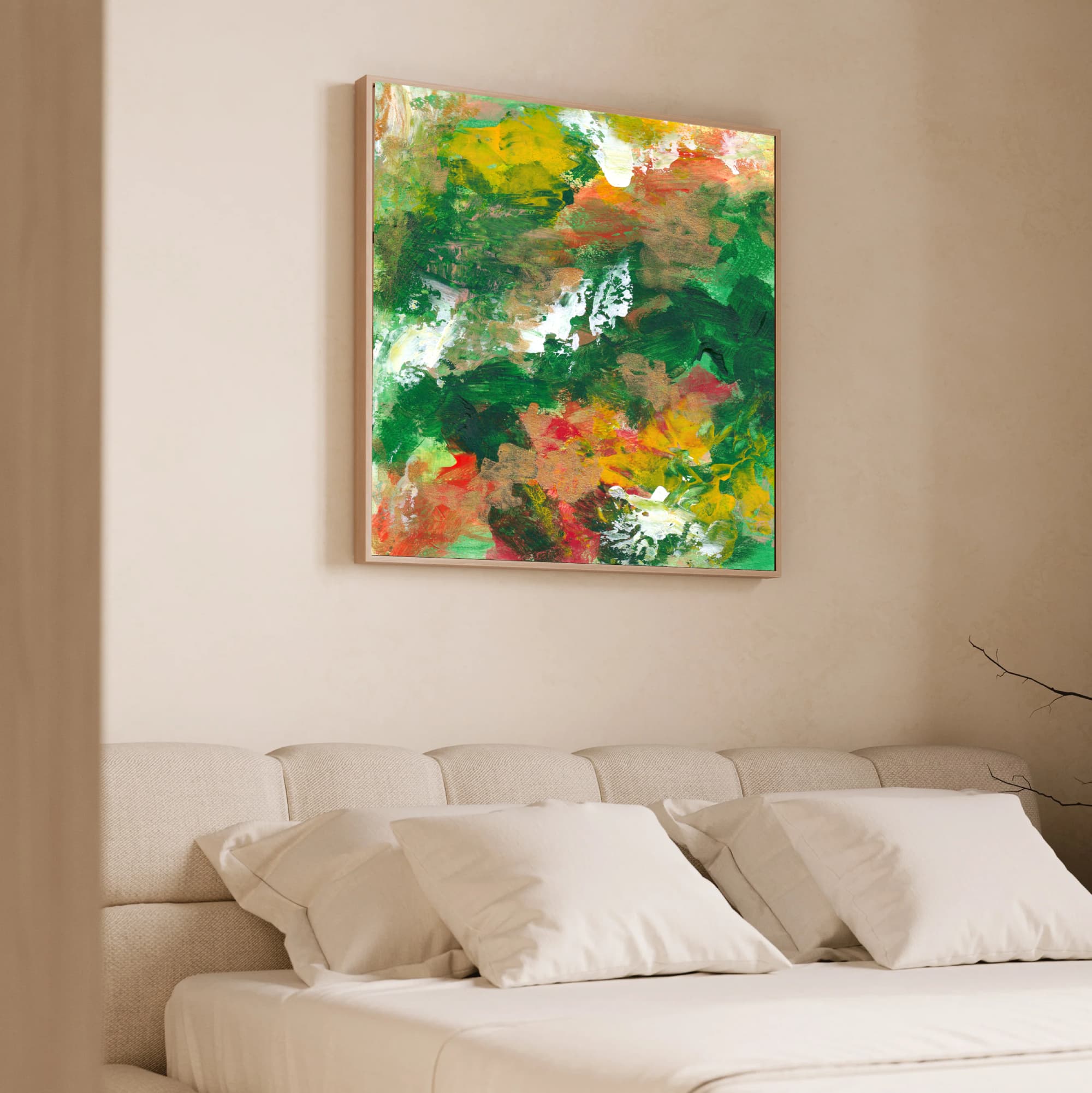
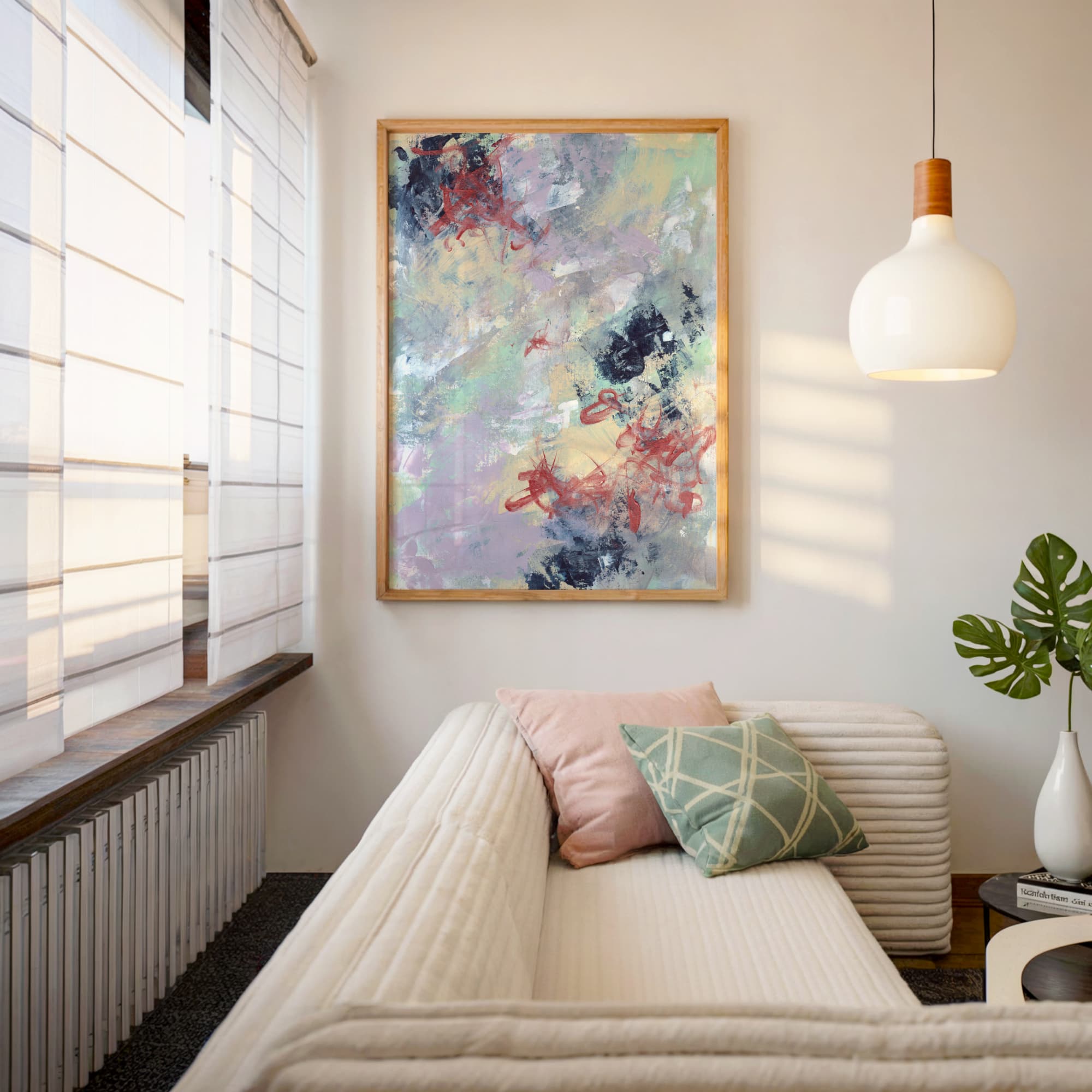
3. Ask What the Piece Holds, Not What It Says
Emotionally intelligent collectors don’t need a painting to explain itself. They need it to hold something.
The Problem With “Meaning”
Too many first-time buyers get stuck asking, “What does this mean?” as if art should provide a neat answer. But emotionally intelligent art isn’t a crossword puzzle. It doesn’t need to decode itself for you.
Presence vs Explanation
The better question is, “What does this hold?” Some works hold grief, others hold clarity, others hold an anchoring calm. You don’t need to explain it in words; you need to feel whether it’s there.
The Return Test
One practical method collectors use is the “return test”: do you keep coming back to the piece, even after you’ve seen hundreds of others? If it stays with you, it’s holding something. If it doesn’t, it’s not your piece.
When you buy emotionally intelligent art, you’re buying more than an aesthetic. You’re buying time. The materials determine whether a work will still feel alive in twenty years, or whether it will sag, fade, or crumble. Serious collectors know this and pay attention.
Why Materials Signal Integrity
Collectors can usually sense when an artwork has been made with integrity. You don’t need to be a chemist. If something looks flimsy or mass-produced, it probably is. Emotionally intelligent art carries weight not just emotionally but physically: archival canvas, high-grade inks, and museum-level stretchers.
The Difference Between Décor and Collector-Grade
Décor is made to look good for a year or two. Collector-grade work is made to last decades. That’s why understanding the production process matters. Ask about UV resistance, pigment depth, and stretching techniques. If the seller avoids the question or doesn’t know, that’s your sign.
Framing and Environment
Materials don’t stop at the artwork itself. Framing can either protect or sabotage a piece. A well-chosen frame stabilises the work, prevents warping, and enhances presence. A cheap one can leech acid into the canvas or leave it vulnerable. Emotionally intelligent collectors don’t skimp on this part.
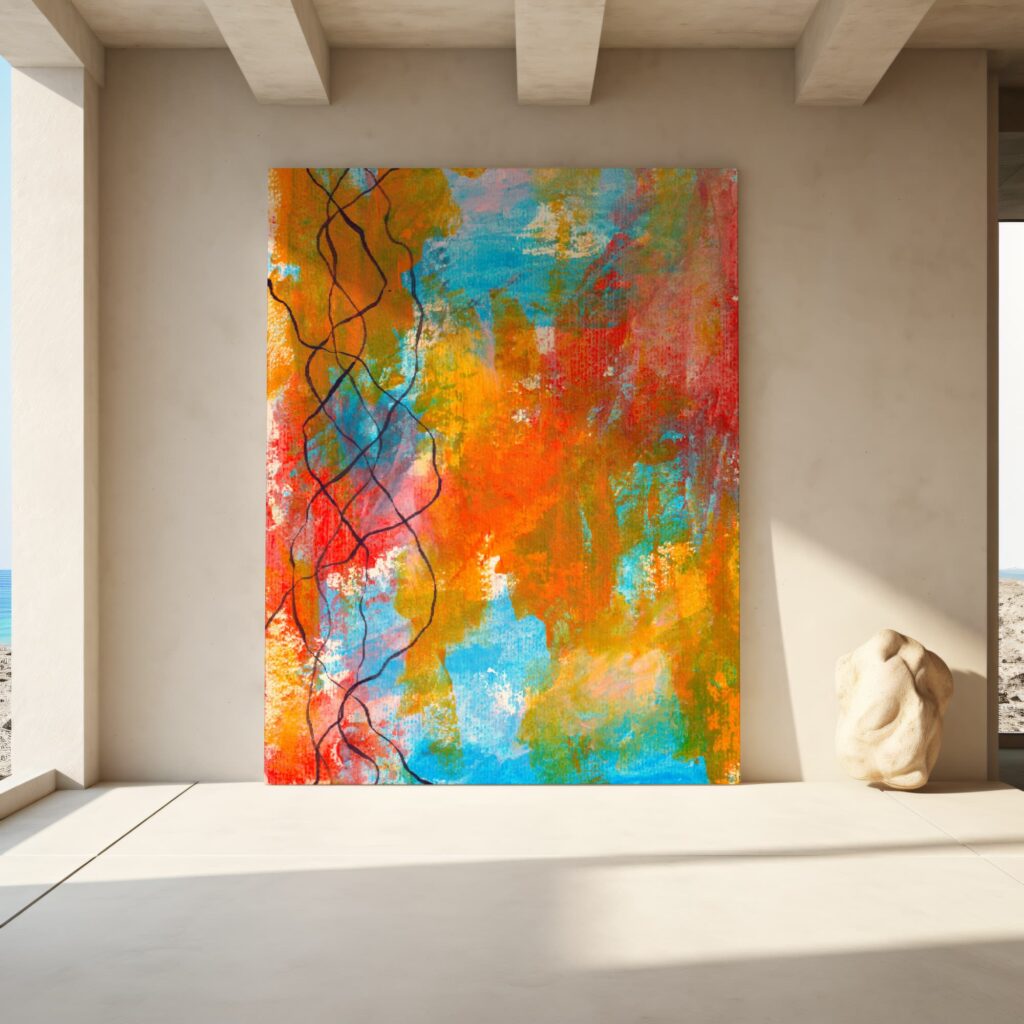
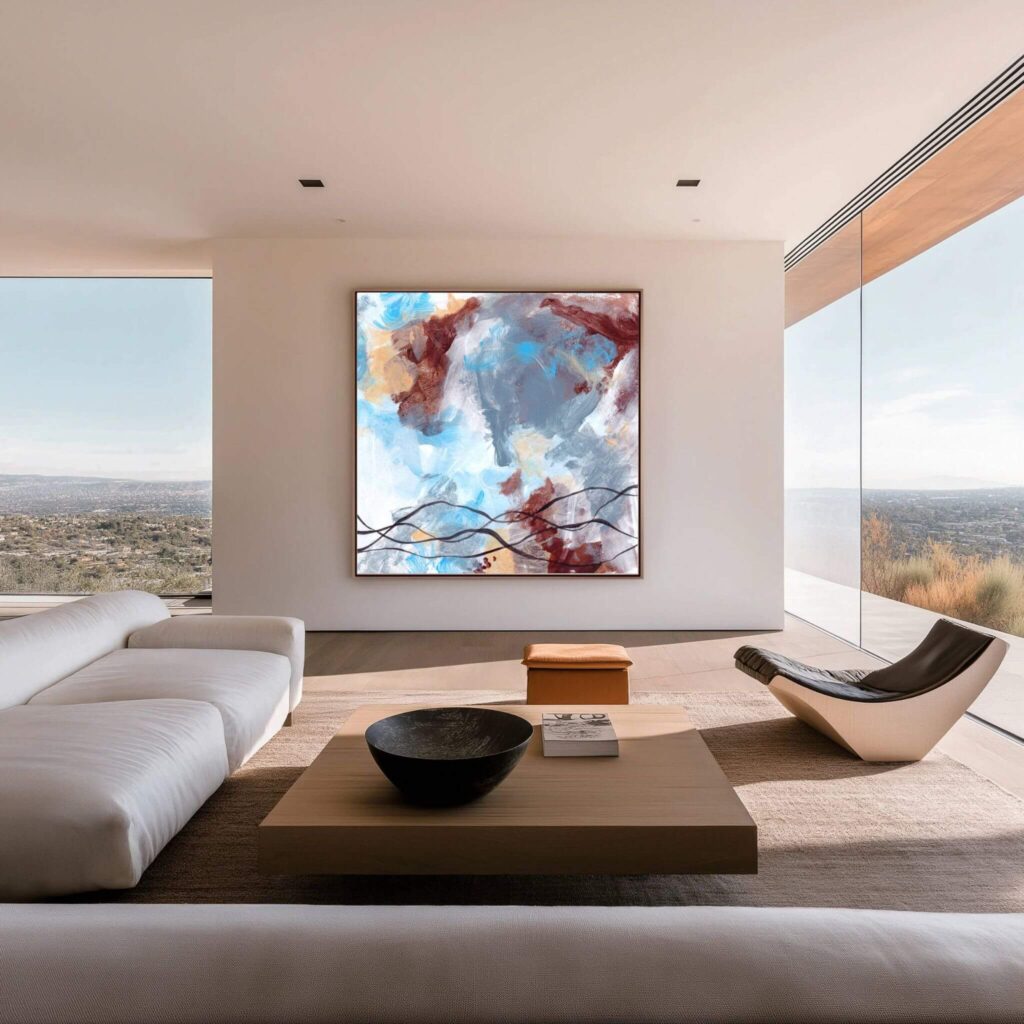
5. Pay Attention to Scale and Placement
Size alone doesn’t make a piece powerful. Collectors who buy with emotional intelligence understand that scale and placement affect presence as much as colour or texture.
The Myth of Bigger Equals Better
Large canvases can dominate a room, but that doesn’t always equal resonance. A massive work can drown a space if it doesn’t carry emotional weight. On the other hand, a modestly sized canvas can quietly command an entire room when placed with care.
Placement as Atmosphere Design
Placement changes how art functions. A piece above a desk may provide grounding during stressful work hours. The same piece in a hallway might instead feel like a passage of calm between rooms. Collectors consider how they want a piece to work in daily life before finalising placement.
Thinking Beyond the Living Room
Most people assume art belongs only in feature walls or living spaces. Emotionally intelligent collectors know better. Bedrooms, studies, and even transitional areas can benefit from presence. In fact, smaller, quieter spaces often allow art to work more intimately.
6. Reject the “One-Size-Fits-All” Pitch
If you’ve ever been told, “This piece would suit anyone,” you’ve been pitched. Emotionally intelligent collectors know art is never universal. The right work either belongs with you, or it doesn’t.
The Red Flag of Persuasion
When someone is trying hard to convince you, step back. The need for persuasion usually means the work isn’t resonating on its own. Emotionally intelligent collectors walk away from high-pressure sales tactics because they know the right work doesn’t need defence.
How the Right Piece Feels
When a piece is right, it clicks without commentary. You feel it in your body before you can explain it. Collectors often describe it as a subtle weight lifting or a deep grounding. If you don’t feel that, no amount of discounting or “limited edition” hype will make it real.
Protecting Your Collection From Noise
Saying no is just as important as saying yes. Collectors who build strong, emotionally intelligent collections develop a kind of radar for work that doesn’t fit. They aren’t afraid to pass on something, even if it’s “in demand,” because they know it would dilute the integrity of their collection.
Why Patience Outweighs Pressure
Many galleries thrive on urgency: “Last chance,” “Only one left,” “You need to decide today.” But emotionally intelligent collecting is about patience. The right piece will wait. If it’s sold, another piece that belongs with you will appear. Presence isn’t rushed.


7. Understand the Privacy Factor
One of the biggest reasons collectors are taking prints seriously now is that the technology has caught up. For a long time, the gap between an original and a print was obvious. Colours looked flat, textures disappeared, and the whole thing gave itself away at a glance. That isn’t the case anymore.
Why Privacy Actually Matters
Visibility can distort choices. When a purchase is destined for public viewing, it is easy to start buying for the photograph rather than the feeling. Privacy removes that pressure. It lets you choose the piece that steadies your mornings, not the one that wins the comments section. If the art is doing emotional work for you, it does not need an audience.
Private Catalogues Create Better Conversations
Quiet buying tends to produce better dialogue. Without a scripted sales floor, you can ask grounded questions about process, materials, and intent. You can take time. You can return to a work more than once and see if it still holds. That is the logic behind the Vault: fewer theatrics, more presence.
Keep Sacred Things Sacred
Some pieces carry private meaning. Grief, recovery, a line in your life that changed direction. You might not want those stories in print. Keeping work off social media, declining press, and limiting who sees it in your home are simple ways to protect the emotional weight you bought it for.
Practical Ways to Buy Quietly
Ask about neutral shipping and plain documentation. Keep the invoice and any artist notes together for your records. If you frame locally, choose a framer who respects discretion. None of this is dramatic. It is just the same care you already take with the rest of your life.
8. Evaluate the Emotional ROI
Resale value is a guess. Emotional return is measurable every day. That is the collector’s advantage when you buy for presence: you can tell if the work is earning its keep simply by living with it.
The Daily Test
Stand in front of the piece when you come home tired. Does your breathing slow? Do your shoulders drop? Do you stay there a moment longer than you planned? If the answer is yes, the work is already paying out, and you do not need a spreadsheet to prove it.
How it Helps You Work and Rest
Art can be a regulator. In a study, the right piece can keep your attention steady and cut the noise in your head. In a bedroom, it can tone the room down so you actually sleep. If the work is not supporting the function of the room, it is décor. If it is, it is an asset.
Measuring Across Seasons
Presence builds. A piece that centred you in a hard month, then later became a quiet companion in better times, has a different value than one that looked exciting for two weeks and then faded into the wall. Give the work a season. Notice whether it keeps showing up for you.
Money Still Counts, it Just Does Not Lead
It is fine to care about financial upside. Just don’t let it choose for you. Market cycles turn. Your nervous system does not run on auction results. Buy the piece that holds your life. The market can do what the market does.

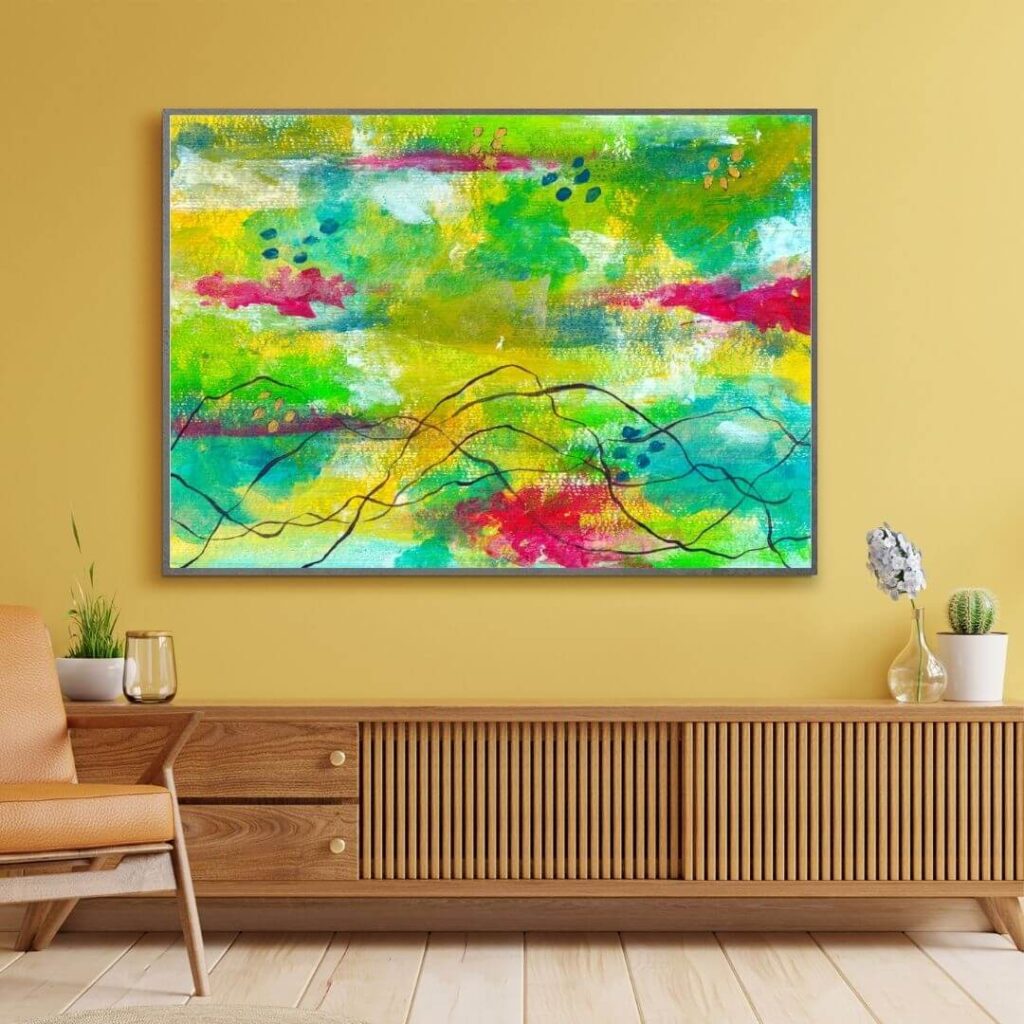
9. Consider Legacy Early
Legacy is not a late-stage problem. It starts with your first serious purchase. Decide now what you want your collection to do for the people who will live with it after you.
A legacy can be private. You do not need your name in a catalogue. You need work that keeps its presence when the stories shift hands. Your heirs will remember how a piece made the room feel long after they forget who approved the framing.
Choose What Ages Well
Trend-led work dates quickly. Pieces chosen for resonance age differently. Look for durable materials, stable colour work, and a visual language that holds beyond a season. Ask for process notes. Keep them. Future you will be glad you did.
Document the Human Bit
Write a short note about why you bought the piece, where it lived, and what it held for you. Keep it with the certificate, the invoice, and any studio correspondence. This is provenance with a pulse. It helps the next person understand why the work mattered.
Think About Future Rooms
Collections move. People move. Consider how a piece might read in a different house, different light, or a different stage of life. If a work can still anchor a room under those changes, it is a strong legacy candidate.
10. Choose Artists Who Value Presence Over Performance
Not all artists are working from the same place. Some make art as performance, chasing likes, fairs, and attention. Others build work in stillness, with no audience in mind. Collectors who care about emotional intelligence can feel the difference immediately.
Spotting Performance in the Work
Performance-driven art often feels rushed. It leans on shock value, trends, or obvious narratives. It might photograph well on Instagram, but lose its grip when you’re standing in front of it. If you need an artist statement to convince yourself the work has depth, that’s a warning sign.
The Weight of Presence
Art built in presence carries a different kind of gravity. You don’t need it explained to you. The work holds because it was made in stillness, not performance. Emotionally intelligent collectors notice this weight and choose accordingly.
Building a Collection With Integrity
When you buy from artists who value presence, you’re not just collecting objects. You’re building a body of work that feels coherent over time. Integrity compounds. Each piece reinforces the next.
My Offerings
Whether you’re a private collector, a wellness-focused brand, or a designer sourcing for a high-calibre project, I offer art that resonates deeply and subtly.
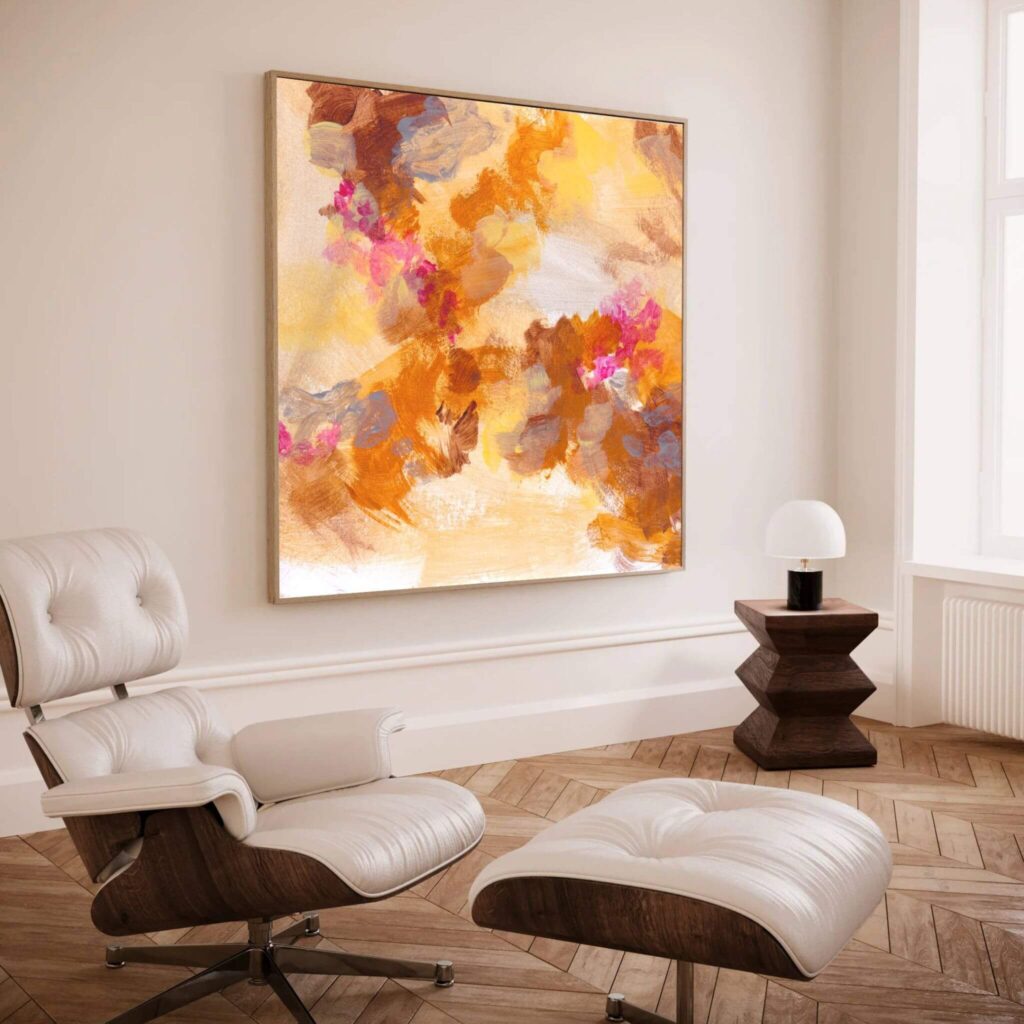
Collector's Vault
Canvas prints from the archive, made with emotional resonance and sustainable materials for spaces seeking depth.
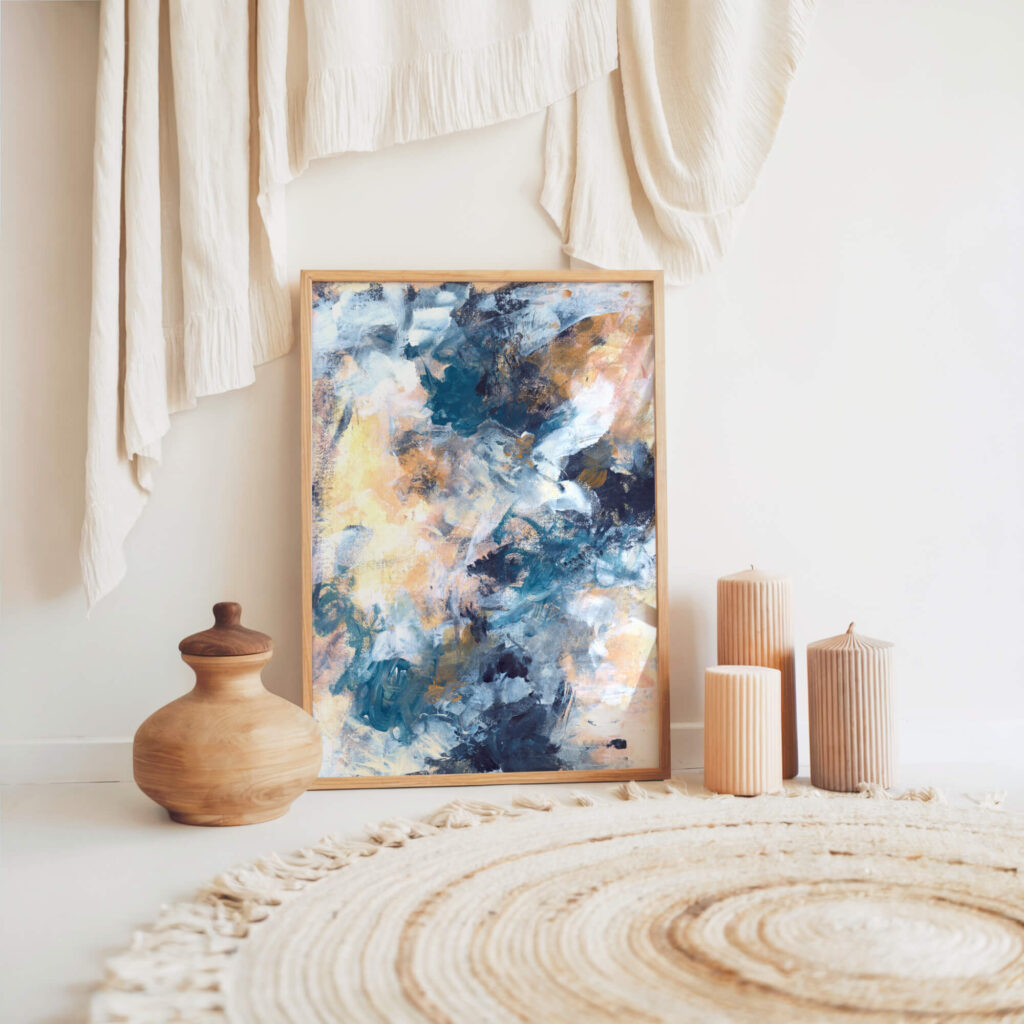
Capsule Commission
Created privately, one at a time, through stillness and reflection. Limited spaces each season to preserve depth and intimacy.
The Last 10
Ultra-limited, hand-embellished editions. No more than ten will ever exist. Made to ground, steady, and hold presence at the highest tier.
13. Remember That Emotion Is the Ultimate Luxury
Luxury is often confused with price. A diamond is expensive, therefore it must be luxury. But emotionally intelligent collectors know better. True luxury is emotional depth, the kind you cannot fake with a price tag.
Why Price isn’t the Whole Story
An expensive piece can still feel empty. Price shows scarcity and market positioning, but it does not guarantee resonance. Collectors who chase numbers sometimes end up with rooms that look impressive but feel lifeless.
Luxury as Presence
Emotion is the only metric that matters long term. If the work makes you feel something every day, that is luxury. The kind of luxury you cannot buy in a hurry, because it has to belong with you.
Collecting With This in Mind
When you use emotion as your compass, your collection starts to build coherence. Pieces belong to one another, even if they look different. They hold a common thread, your thread.
14. Use a Checklist, But Trust Your Gut
Checklists are useful. They help you avoid cheap production, rushed buying, and decorative traps. But even the best list cannot make the decision for you. At some point, you have to trust your own sense of belonging.
The Role of The Checklist
Think of it as a filter, not a dictator. Use it to narrow down, to ask better questions, and to slow yourself down when the sales pressure starts. It makes the buying process calmer.
When to Drop The List
There comes a moment when no box-ticking matters. If the work holds you, you will know. If it doesn’t, no amount of careful logic will force it to belong. Collectors who learn this balance end up with collections that feel alive rather than curated for someone else’s approval.
Why Gut Still Leads
Your nervous system is faster than your rational brain. You often feel the answer before you think it. Trusting your gut doesn’t mean ignoring practicalities, it means letting resonance have the final say.
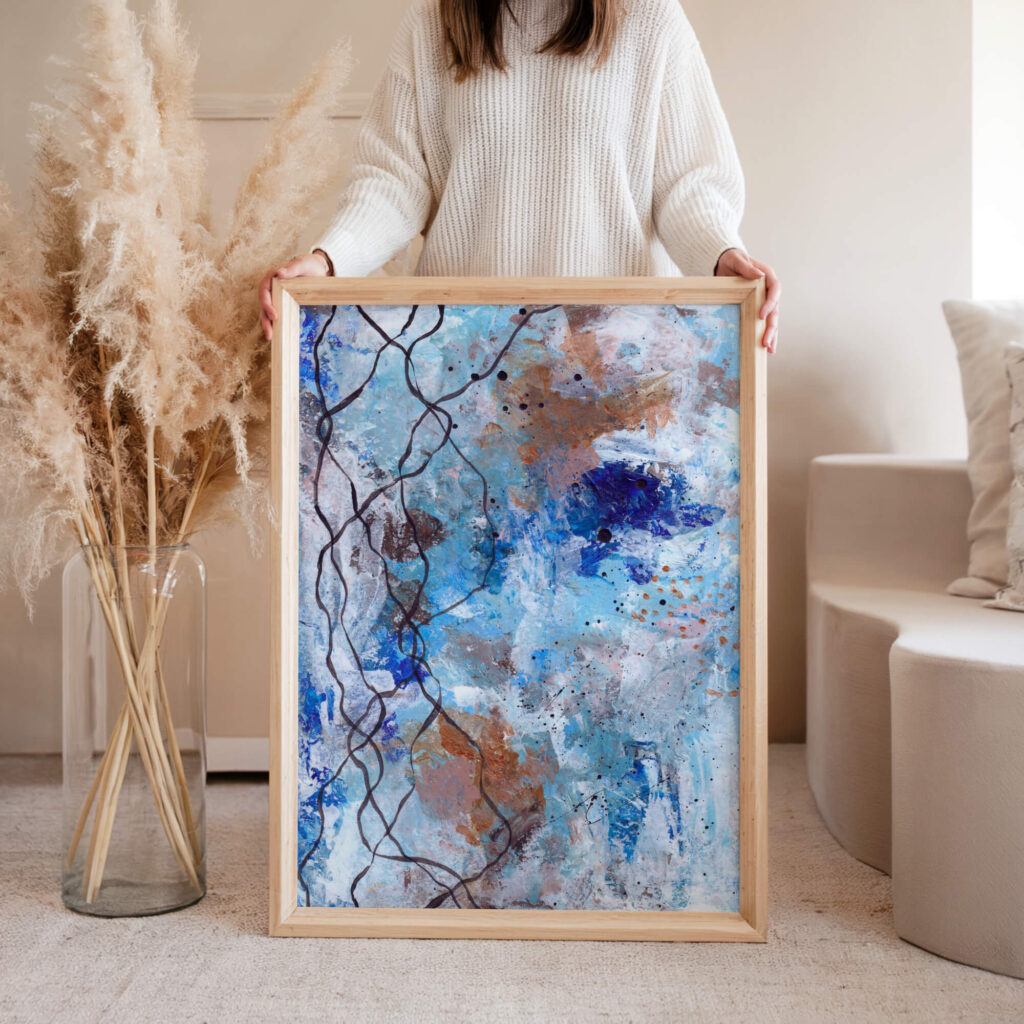
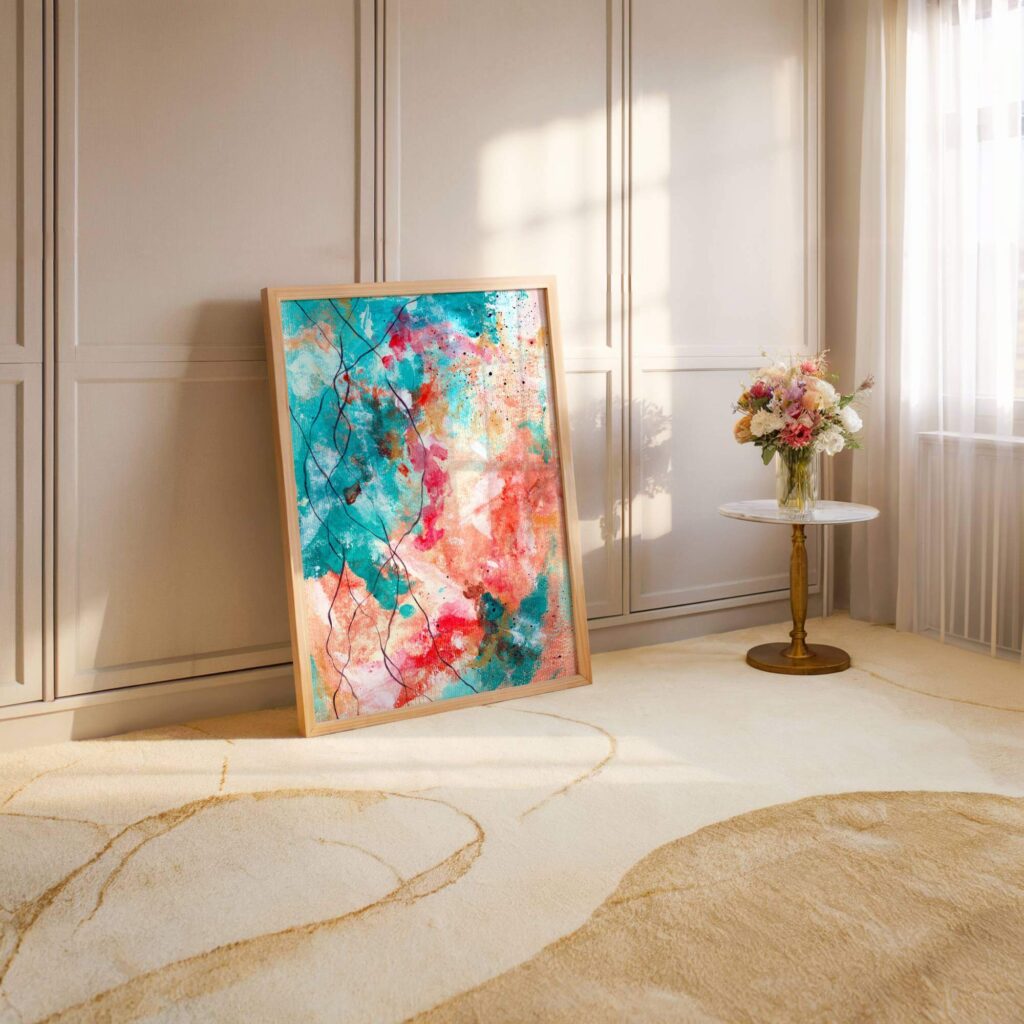
Conclusion: Buying With Presence
Buying emotionally intelligent art is not complicated. It is quiet. The right work doesn’t need persuasion, press, or proof. It needs presence.
This checklist is not here to tell you what to buy. It is here to remind you how to choose. Materials matter, placement matters, legacy matters — but in the end, the work either belongs with you or it doesn’t.
Collectors who understand this build collections that last, not just physically, but emotionally. They end up with rooms that breathe, walls that hold, and pieces that stay alive in private memory.
If you are ready to see how this works in practice, the Vault is open for you. A private catalogue, designed for collectors who want presence over performance.
